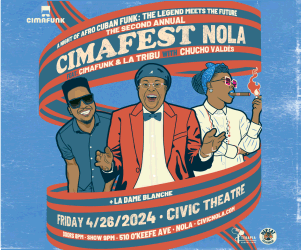This weekend, I chaired a panel at the PotLuck Audio Conference on New Orleans music with Cosimo Matassa, Wardell Quezergue, Harold Battiste, Scott Billington and Mark Bingham. Bingham brought a copy of Ned Sublette’s book Cuba and Its Music, which he considers indispensable for thinking about rhythm, and gave it to Battiste.
Recently, Garnette Cadogan interviewed writer/musician/thinker/provocateur Ned Sublette on the ideas behind his recent book, The World That Made New Orleans: From Spanish Silver to Congo Square for Bomb magazine. This is part one of their discussion on New Orleans and its relationships to America, Cuba and the world south of us. Here’s a sample:
GC So you’re saying [New Orleans is] at the heart of American history, yet also perched at the margins?
NS It was also a major urban center, when the rest of the United States was mostly rural. In the 1830s, New Orleans was almost tied for second-largest city in the United States with Baltimore, with which it did much business. It was relatively dense, because its expansion was constrained by the swamp. Before electrical pumps came in the 1890s, New Orleans couldn’t expand outwards. Old maps refer to it as the “Isle of Orleans.†So early on, before it was part of the United States, it was already urban, and it was a majority-black city for most of the 18th century, up through about the 1830s, and again beginning in the 1970s. In its early years, the city must have rung from one end to the other with the music of black people, which functioned as vital communication.




